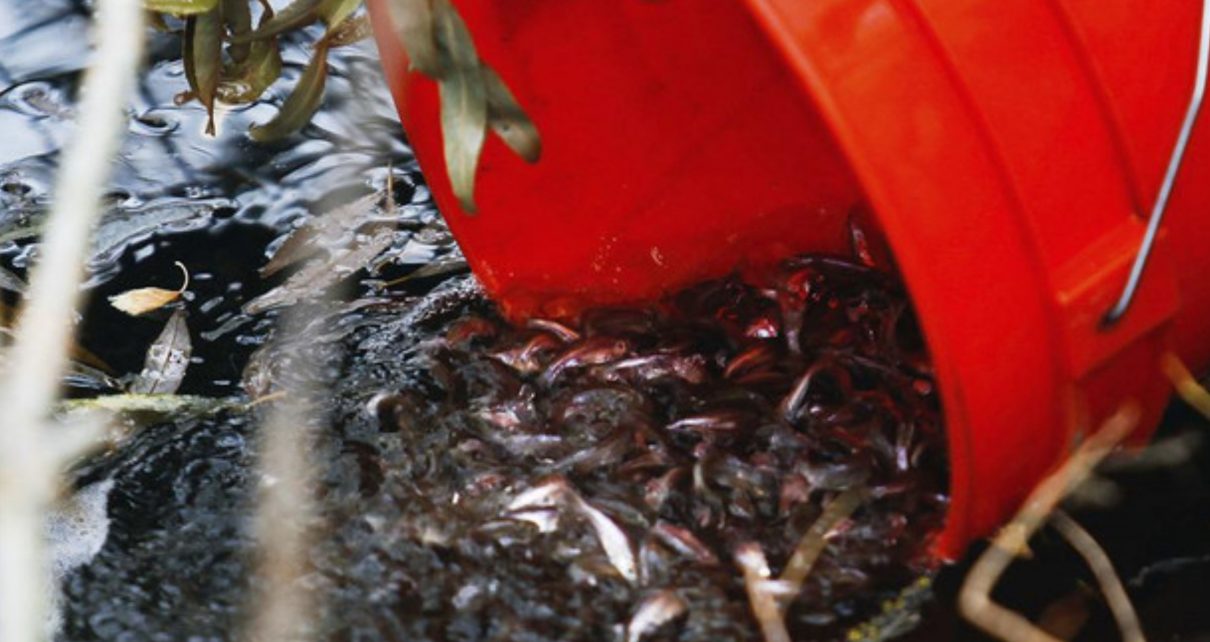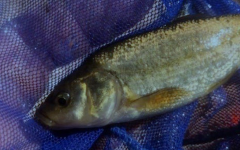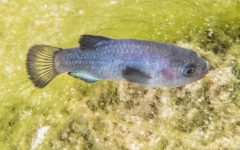
In Nevada and Utah There Are Lawsuits Pending Over Rare Fish
By TheNevadaGlobeStaff, November 24, 2022 11:45 am
RENO, Nev. (775 Times, NV Globe) – Two endangered fish species that are threatened by groundwater pumping in the drought-stricken West have received notice from conservationists that they would sue over insufficient choices on their safeguards.
Last Thursday, the Center for Biological Diversity filed a formal notice of intent to sue the Fish and Wildlife Service over the Fish Lake Valley tui chub along the California-Nevada border and the least chub in southwest Utah.
Utah and Nevada are the driest states in the country, and the proposed lawsuits are one of several fronts on which conservationists are challenging water agencies and the customers they serve over plans to siphon water to either sustain or boost consumption.
The conclusion of the legal battles will almost certainly have far-reaching consequences for the arid valleys of the states, as well as the people and species that live in them.
Water allocations for conventional agricultural usage as well as urban development plans are threatening the high-desert springs where the minnows thrive, according to the organization seeking federal listings under the Endangered Species Act.
The Fish and Wildlife Service ruled in August that there was enough evidence that the tui chub was on the verge of extinction in Nevada, owing mostly to over-pumping of water for farms and ranches, to warrant a yearlong assessment to determine whether it should be classified.
In June 2021, three months after the center requested the listing, the ’90-day finding’ was supposed to be submitted. The center also stated in its Nov. 15 letter to the agency that the yearlong evaluation should have been completed in March.
“The Fish Lake Valley tui chub is on the verge of extinction due to catastrophic exploitation of groundwater in its natural area,” said Patrick Donnelly, Great Basin director of the Center for Biological Diversity.
In an email to The Associated Press on Wednesday, Service spokesman Laury Marshall stated that the agency does not comment on lawsuits. The original listing petition “presents sufficient scientific or commercial information indicating that designating the Fish Lake Valley tui chub as an endangered or vulnerable species may be appropriate,” according to agency officials.
The 5-inch-long, olive-colored tui chub may still be found in a basin in Esmeralda County, between Reno and Las Vegas.
The groundwater levels in Lake Valley have dropped by as much as 2.5 feet (76 centimeters) every year over the last half-century, resulting in a total drawdown of more than 75 feet (23 meters) since 1973, according to the listing petition.
Active geothermal leases and lithium claims nearby, according to Donnelly, might also jeopardize the springs if exploited.
In Utah, projected groundwater pumping to sustain urbanization in Cedar City, about 170 miles (270 kilometers) northeast of Las Vegas, threatens more than half of the surviving wild populations of the least chub.
The organization petitioned to list the 2-inch-long, gold-colored minnow in September 2021, claiming the Pine Valley Water Supply Project as a hazard. The panel also stated that an initial finding and a 12-month evaluation for that species are overdue.
The least chub, which was once extensively spread in Utah’s Bonneville Basin, now has only seven natural populations and approximately a dozen refuge populations where it has been reintroduced.
The institute stated that “significant habitat loss and modification, as well as competition and predation from non-native species, have brought this species near to extinction.”
Central Iron County Water Conservancy District officials in Utah propose to spend nearly $260 million to build about 70 miles (110 kilometers) of subterranean pipes to transfer water from an aquifer underneath Pine Valley, an undeveloped, rural region north of Cedar City. They claim that limited local groundwater availability and an influx of new population need diversifying their water source in order to prepare for the future.
According to District General Manager Paul Monroe, a review of groundwater evaluations revealed that any effects on the springs would be “less than substantial.”
Beaver County, Native American tribes, certain ranchers, and Nevada counties have long opposed the proposal, fearing that siphoning water from Pine Valley may harm local aquifers.
“Endangered Species Act protection would ensure that the Pine Valley water grab would not imperil the existence of this tiny native Utah fish,” Krista Kemppinen, senior scientist with the Center for Biological Diversity, stated.
Credits: Fox Reno
Copyright 2022 775 Times, NV Globe. All rights reserved.




